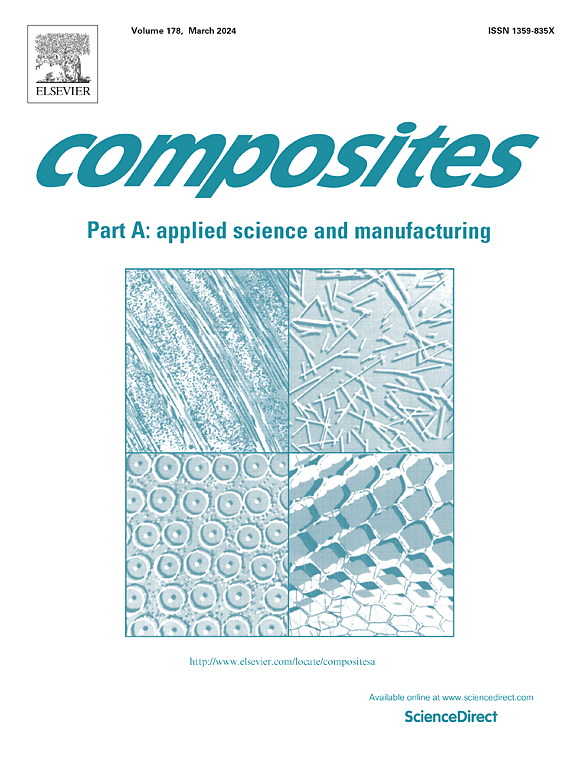Rapid out-of-oven lamination (ROL) for energy-efficient manufacturing of carbon fiber reinforced composites
IF 8.1
2区 材料科学
Q1 ENGINEERING, MANUFACTURING
Composites Part A: Applied Science and Manufacturing
Pub Date : 2025-03-26
DOI:10.1016/j.compositesa.2025.108873
引用次数: 0
Abstract
Traditional composite manufacturing typically involves batch processing with long curing cycles in capital-intensive equipment to achieve composites that are constrained to be less than the size of the mold or oven. Here, we report a rapid out-of-oven lamination (ROL) process for energy-efficient and continuous manufacturing of carbon fiber (CF) reinforced composite laminates. The energy efficiency of our process stems from the combination of two distinct features: (i) the direct and simultaneous application of cure-initiating thermal energy and compaction pressure via hot rollers, and (ii) the resulting rapid through-thickness bulk polymerization of CF prepregs infused with catalyzed dicyclopentadiene (DCPD). We investigate the effects of roller speed, temperature, and pressure on the degree of cure and compare the experimentally observed thermal evolution of the laminates with a thermo-chemical computational model. We demonstrate the applicability of our process to CF-based prepregs through rapid manufacturing of unidirectional, cross-ply, and fabric laminates. The resulting composites have high CF volume fractions, low void fractions, and flexural moduli that approach predictions made by Classical Laminate Theory. Composites that are three times longer than the fabricator are manufactured to demonstrate that dimensions are not limited by the size of the processing equipment. The ROL process is estimated to require two orders of magnitude less curing energy by volume and to be significantly less time-intensive than traditional processes. Overall, the rapid, energy-efficient, and continuous nature of the ROL process makes it a good candidate for manufacturing high-quality structural composites in environments constrained by available energy or fabricator size.
求助全文
约1分钟内获得全文
求助全文
来源期刊

Composites Part A: Applied Science and Manufacturing
工程技术-材料科学:复合
CiteScore
15.20
自引率
5.70%
发文量
492
审稿时长
30 days
期刊介绍:
Composites Part A: Applied Science and Manufacturing is a comprehensive journal that publishes original research papers, review articles, case studies, short communications, and letters covering various aspects of composite materials science and technology. This includes fibrous and particulate reinforcements in polymeric, metallic, and ceramic matrices, as well as 'natural' composites like wood and biological materials. The journal addresses topics such as properties, design, and manufacture of reinforcing fibers and particles, novel architectures and concepts, multifunctional composites, advancements in fabrication and processing, manufacturing science, process modeling, experimental mechanics, microstructural characterization, interfaces, prediction and measurement of mechanical, physical, and chemical behavior, and performance in service. Additionally, articles on economic and commercial aspects, design, and case studies are welcomed. All submissions undergo rigorous peer review to ensure they contribute significantly and innovatively, maintaining high standards for content and presentation. The editorial team aims to expedite the review process for prompt publication.
 求助内容:
求助内容: 应助结果提醒方式:
应助结果提醒方式:


